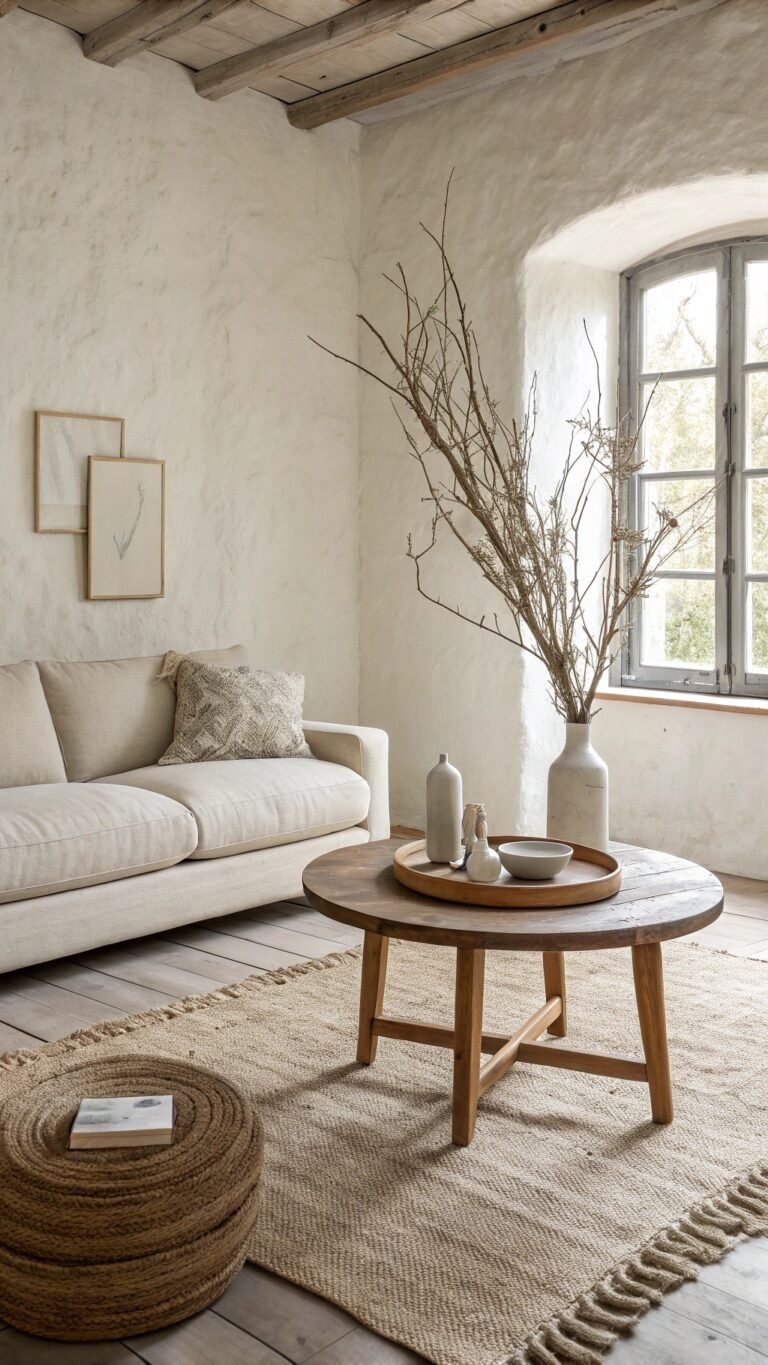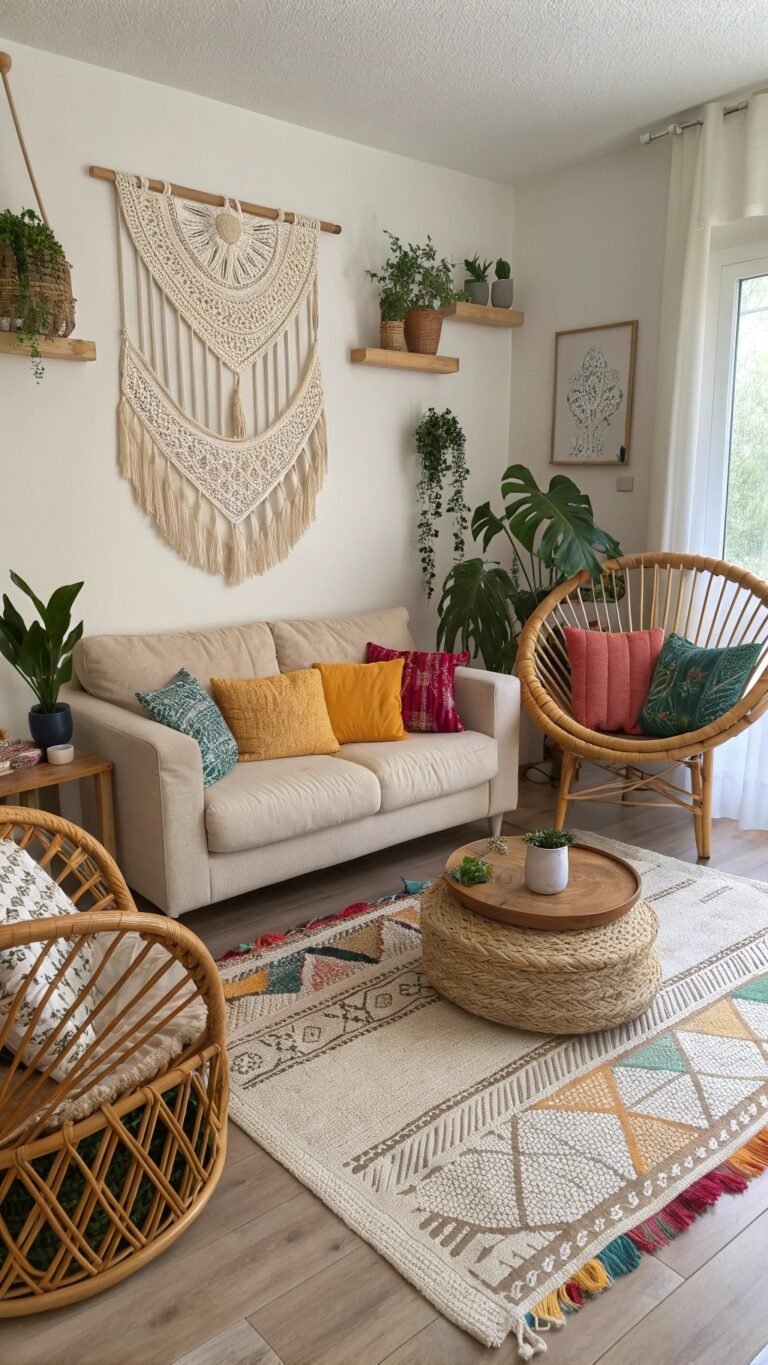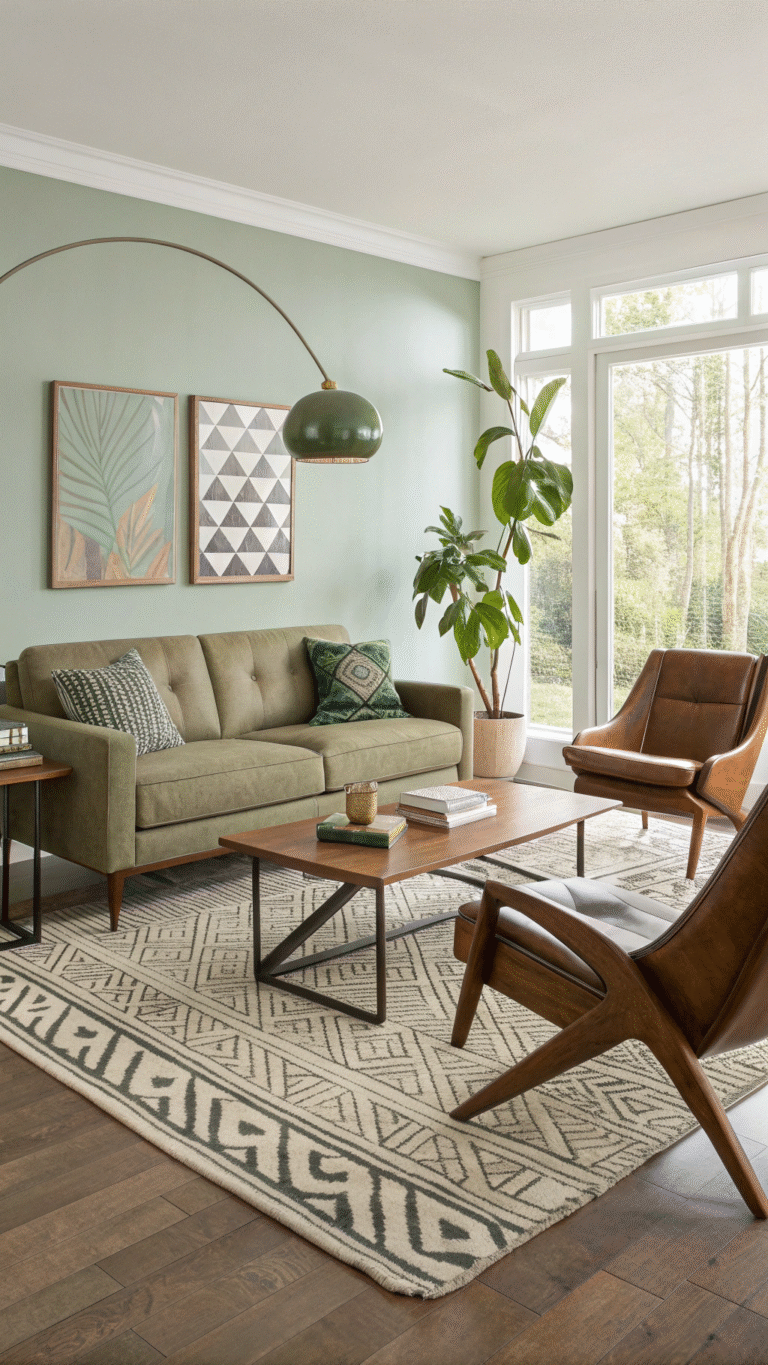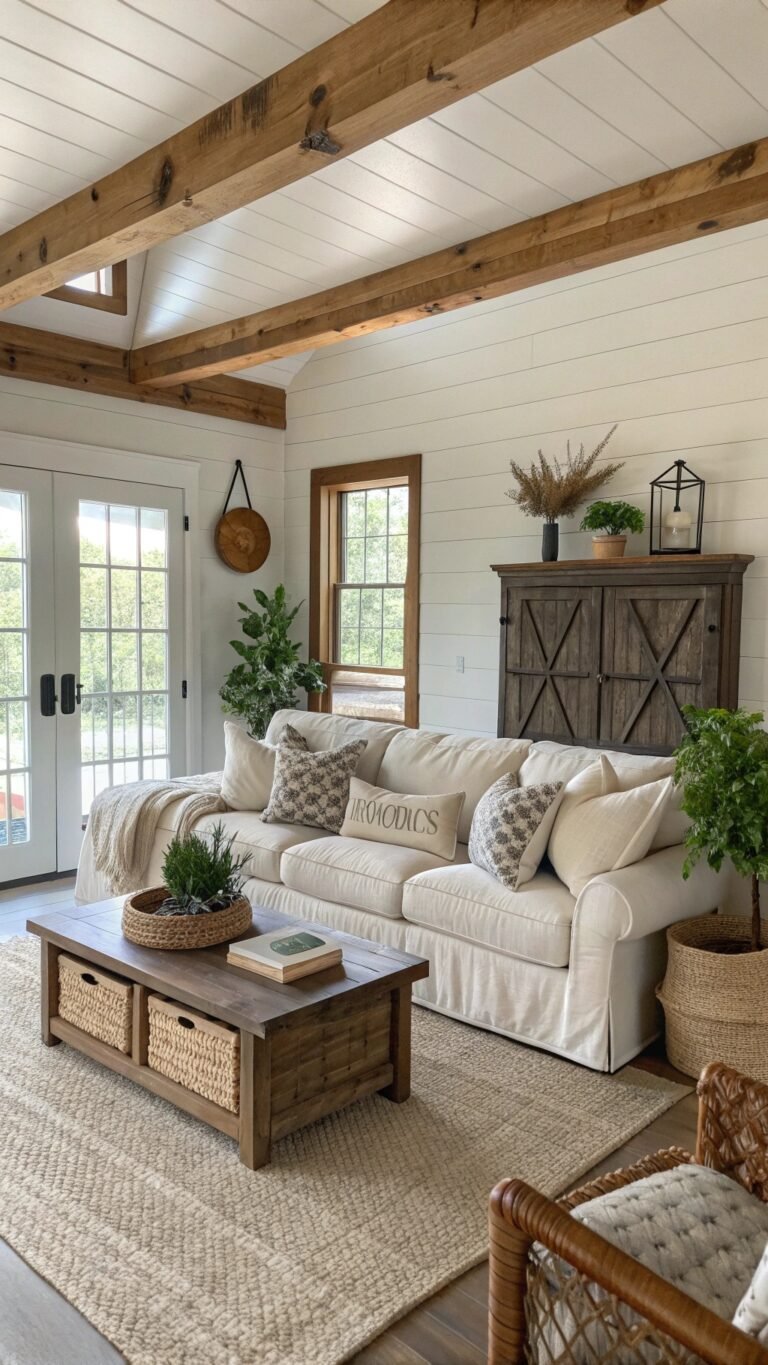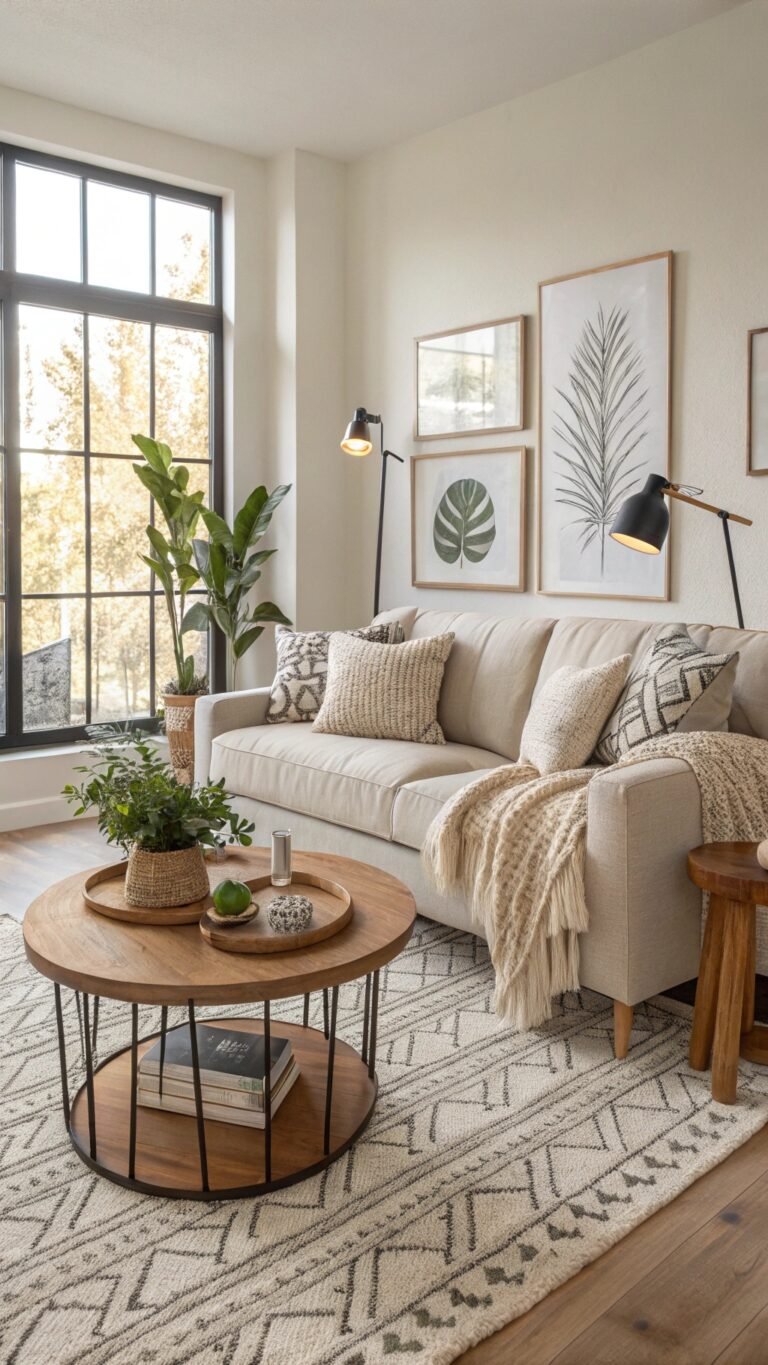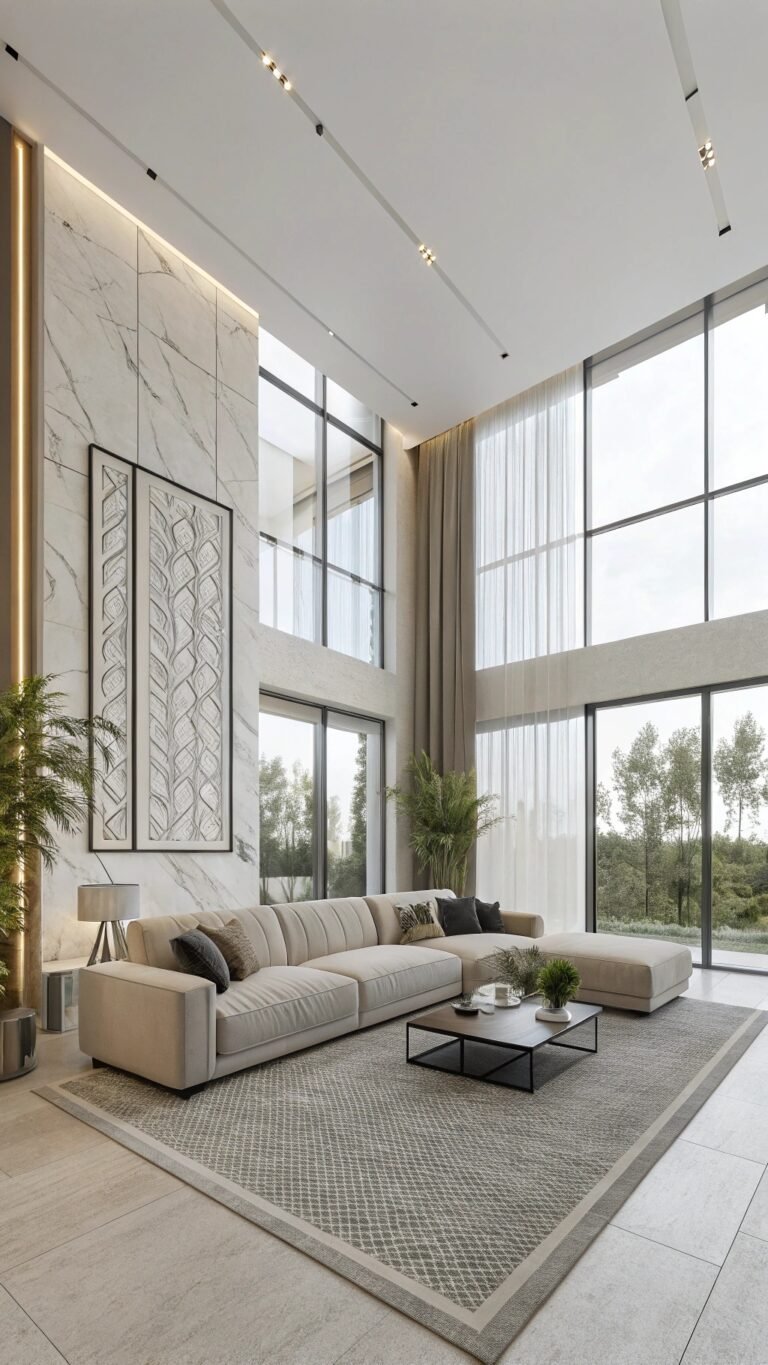Luxury Living Room: 14 Elevated Ideas That Feel Effortless and Refined
Luxury living room design is surging because small, strategic upgrades—statement stone, sculptural lighting, and tailored millwork—create a high-end feel without full renovations.
Designers are layering warm neutrals, rich textures, and curated art to build spaces that photograph beautifully and live comfortably. Choose one hero move, add two subtle tweaks, and the room transforms.
1) Monumental Stone Fireplace Wall
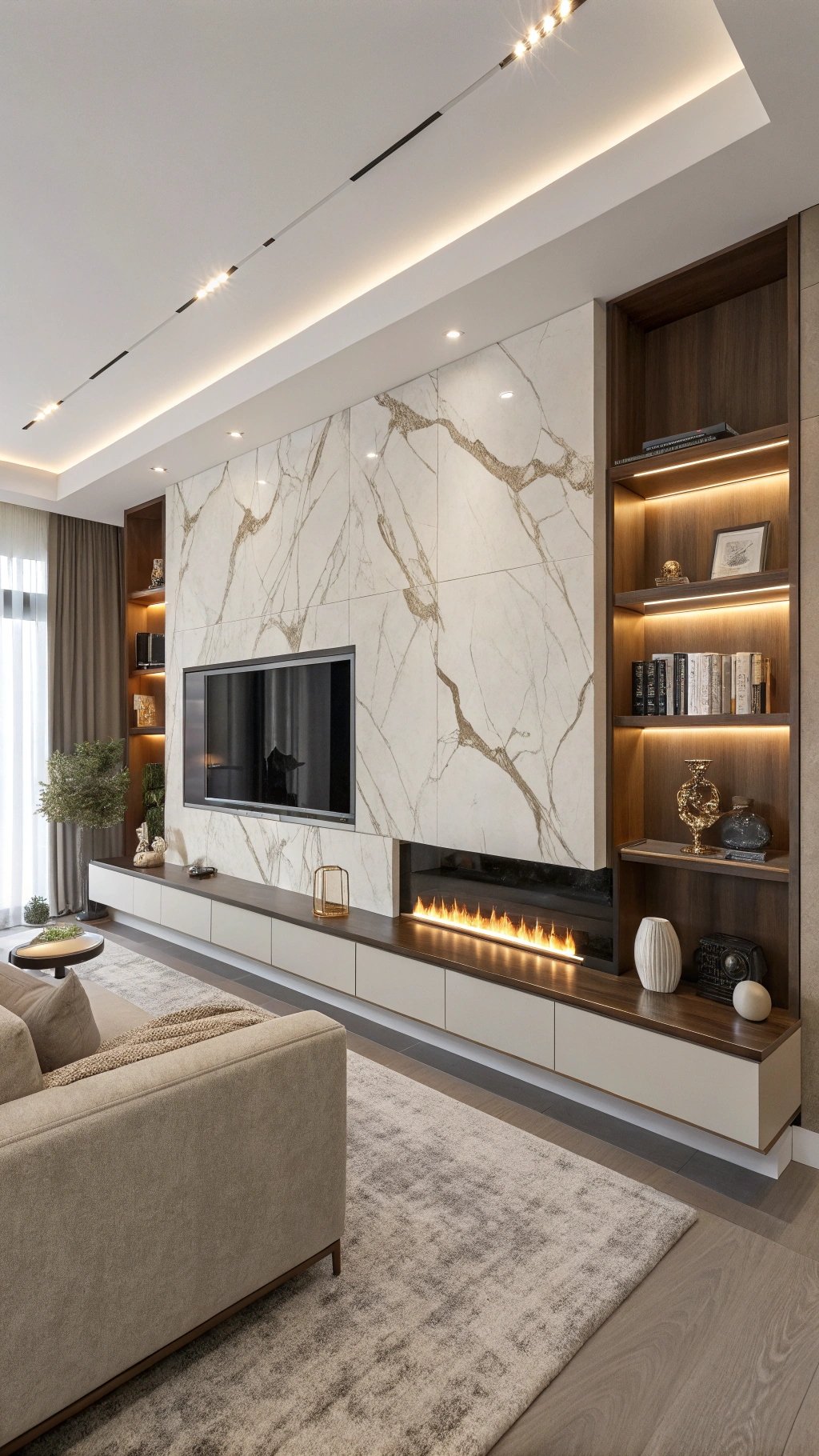
Clad the main wall in veined marble, travertine, or limestone and run the stone floor-to-ceiling for drama.
A minimal mantel and concealed TV lift keep lines clean while a long, low hearth doubles as seating.
The natural veining anchors the palette and instantly raises the perceived value of every surrounding finish and fabric.
What makes something unique:
Book-match slabs to create a mirrored vein that reads like artwork, then graze the surface with warm 3000K LEDs to reveal depth.
Float slim bronze shelves to display a single object rather than many. The quiet negative space around the stone becomes part of the luxury, letting material and light do the talking.
2) Layered Lighting with Sculptural Centerpiece
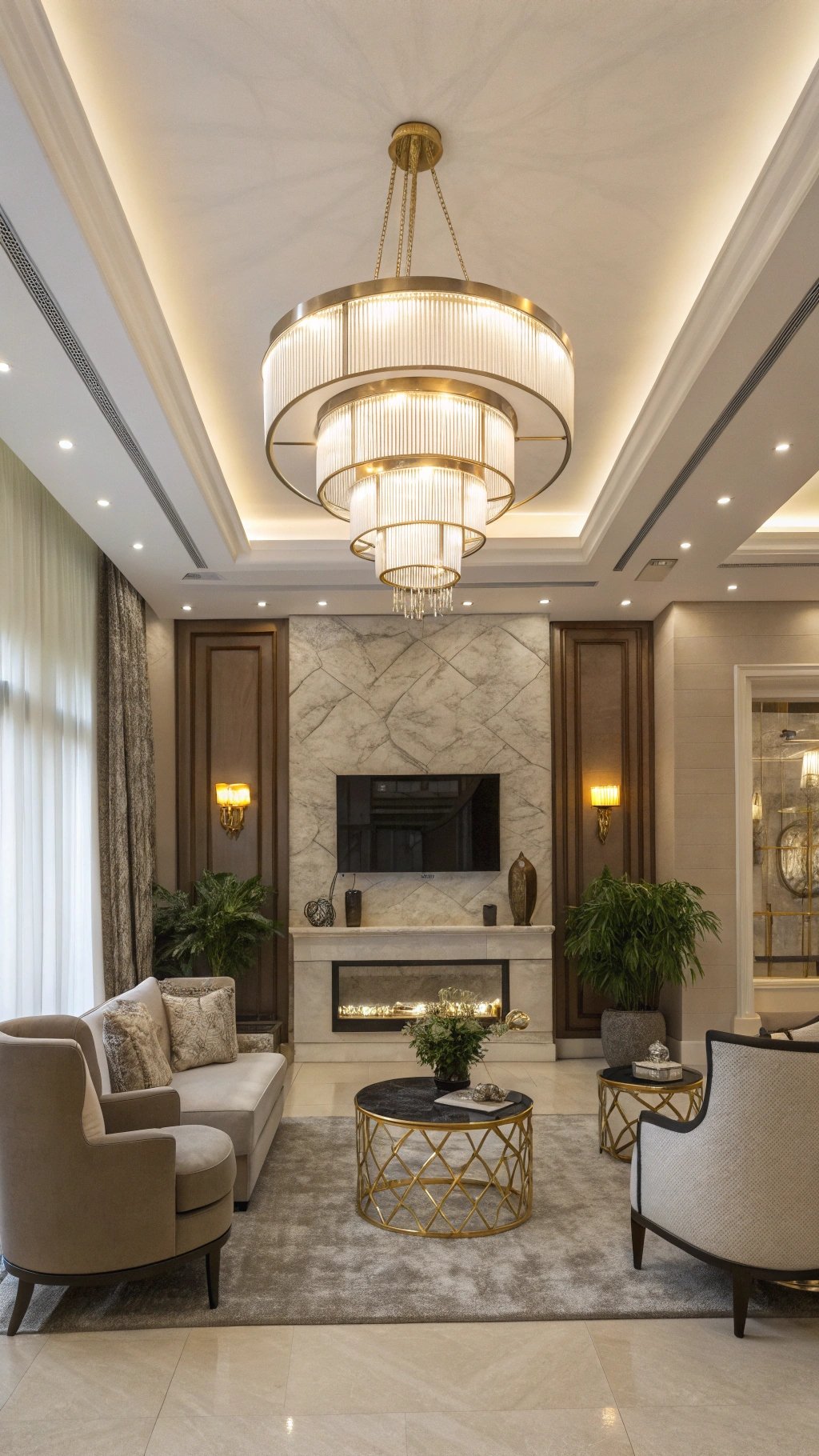
Luxury starts with light. Combine an artful chandelier with perimeter recessed lights, picture lights over art, and toe-kick LEDs under consoles.
Use dimmers to craft scenes—Gather, Movie, Late Night—so the room shifts with you. The interplay of glow and shadow makes textures read richer and colors look intentional.
What makes something unique:
Select a chandelier that functions as sculpture even when off—cast glass, alabaster, or hand-formed metal—and echo its finish across small elements like frames and lamp finials.
Add a tiny uplight behind a plant for night drama. The choreography of light becomes the decor, allowing fewer objects to feel like more.
3) Tailored Built-Ins with Hidden Bar
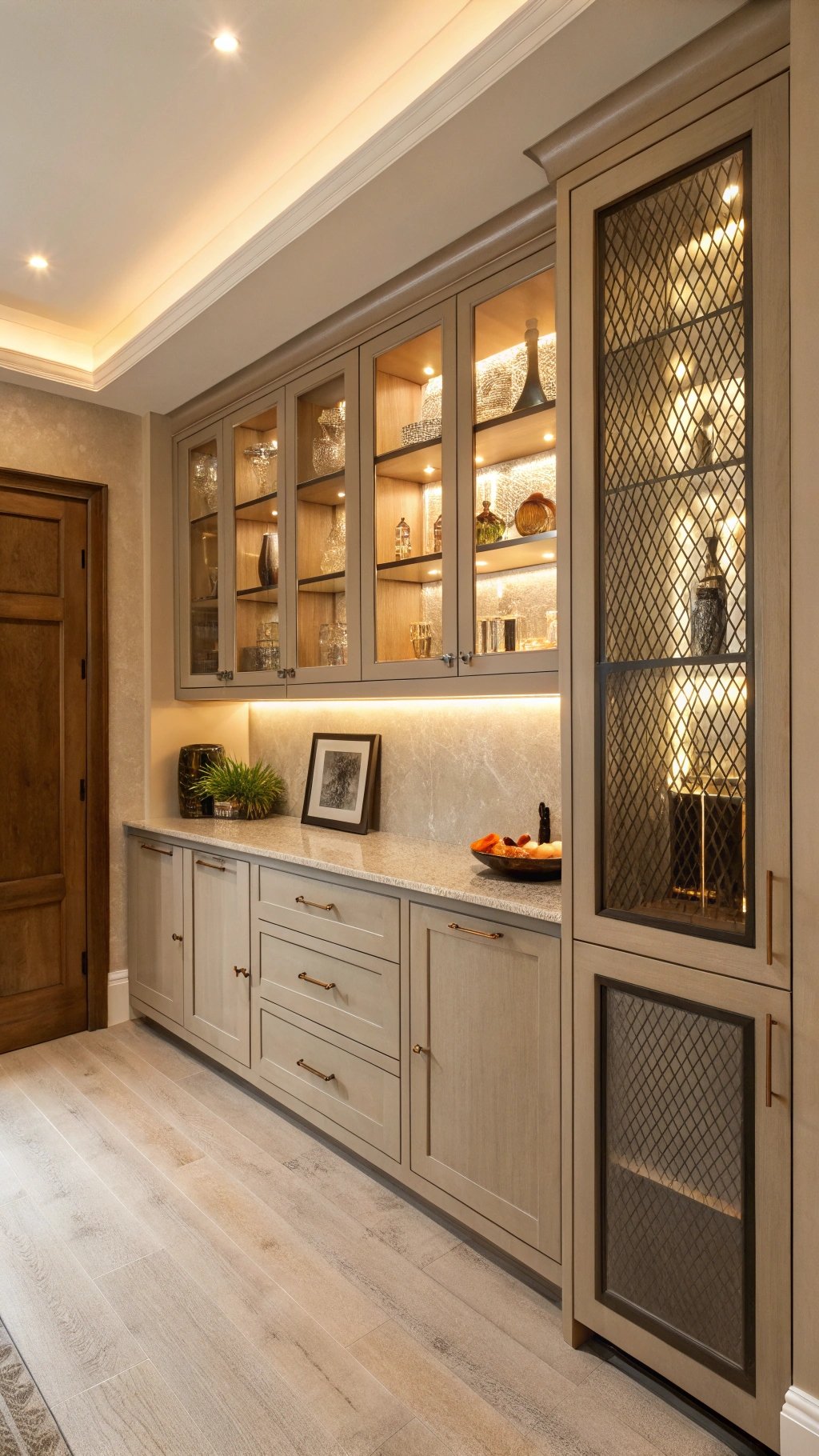
Wall-to-wall cabinetry painted to match the walls reads like architecture, not furniture. Mix closed storage below with open shelves above, styled with generous negative space.
Conceal a pocket-door bar niche with a mirrored back and a stone counter for an evening ritual that tucks away completely when not in use.
What makes something unique:
Line the shelf undersides with integrated LEDs and specify fluted or ribbed interior panels for subtle texture.
Use bronze mesh on a single cabinet to hint at the bar without revealing it fully. The reveal moment—open, glow, pour—becomes a luxury experience that’s as practical as it is beautiful.
4) Conversation Pit Energy—Without the Pit
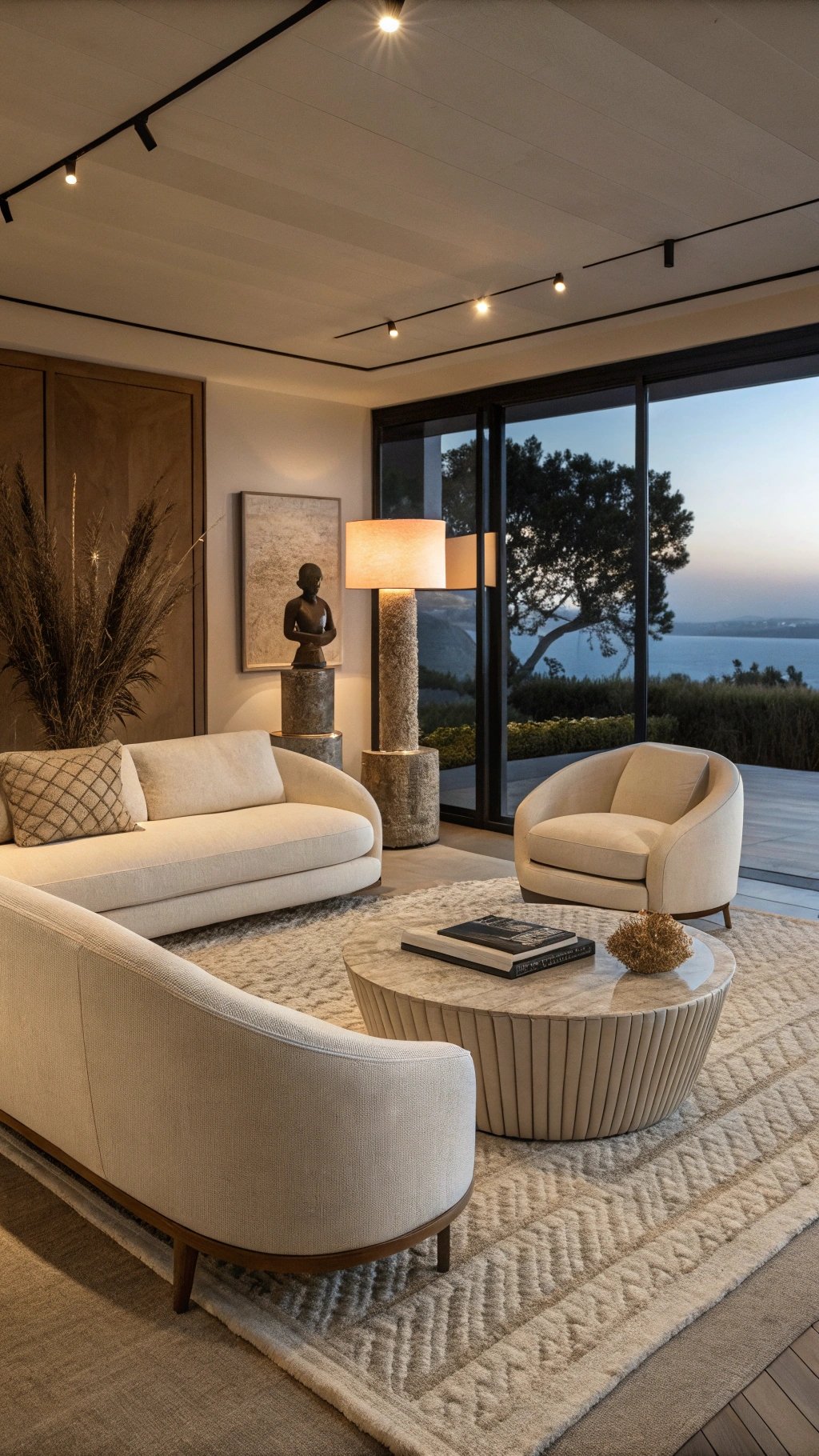
Create a low, inward-facing seating island: deep sofa, paired lounge chairs, and a substantial coffee table.
Keep profiles low to preserve sightlines, and ground everything with an oversize hand-knotted rug. Intimacy rises, acoustics improve, and the room feels exclusive even during casual evenings.
What makes something unique:
Choose asymmetric placement: two chairs on one side, a sculptural stool opposite, and a pedestal for art.
This slight imbalance feels curated, not messy. Add a thick boucle or mohair throw for tactile contrast against stone or metal—luxury you can feel, not just see.
5) Couture Textiles and Layered Rugs
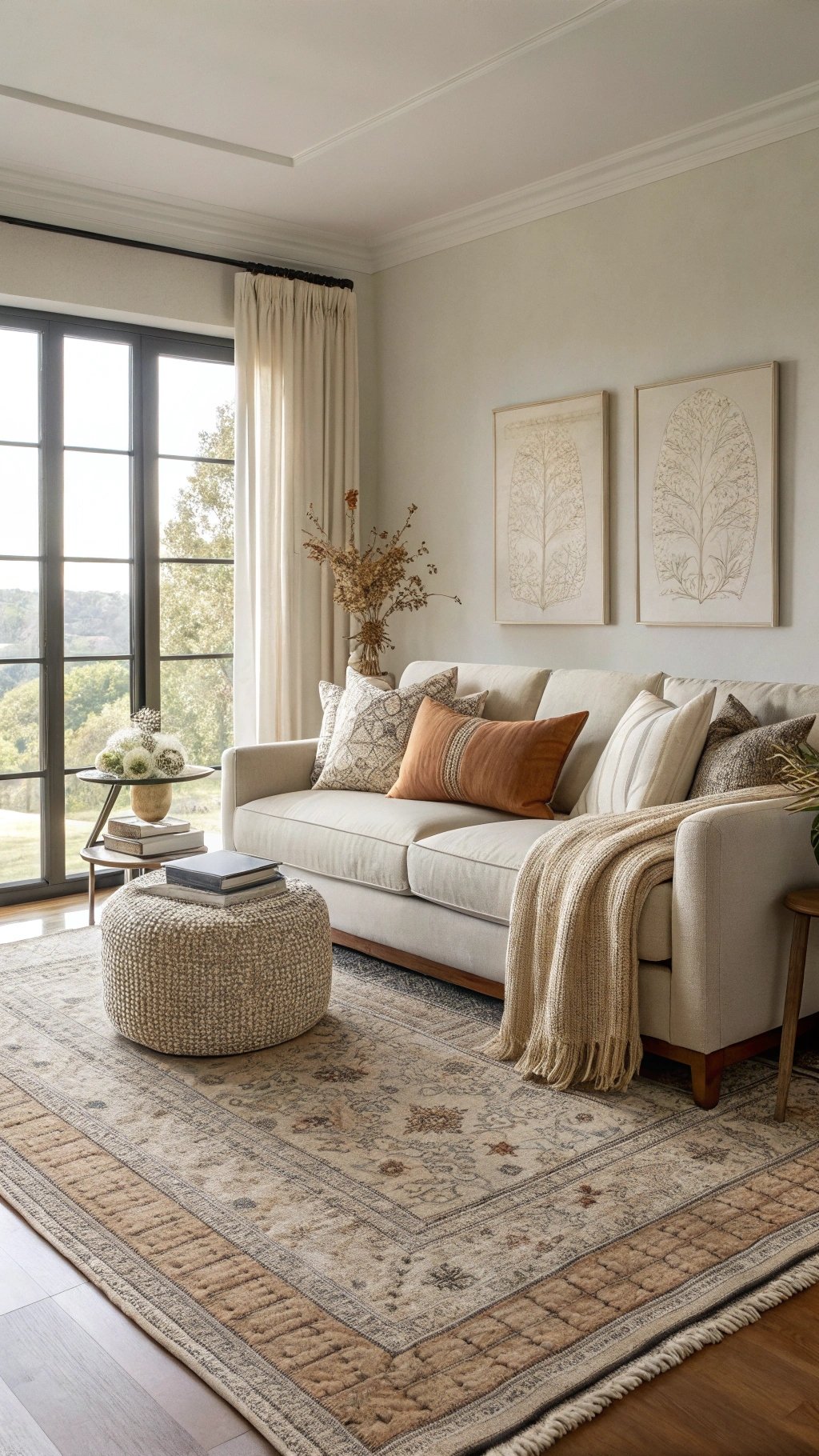
Elevate comfort with textiles that age beautifully: mohair, cashmere, wool-silk blends, and heavy linen.
Layer a flatweave under a silk-wool rug for dimension and quiet underfoot. Keep pattern minimal; let weave, nap, and sheen provide the interest. Cushions in tonal gradients add depth without visual noise.
What makes something unique:
Repeat one textile across scales—a mohair pillow, coordinating throw, and a small upholstered stool—so the room feels intentionally dressed.
Use contrast piping in a related tone to outline forms like tailoring on a suit. The subtle fashion reference reads refined and gives the eye a crisp edge to follow.
6) Metals that Glow, Not Glare
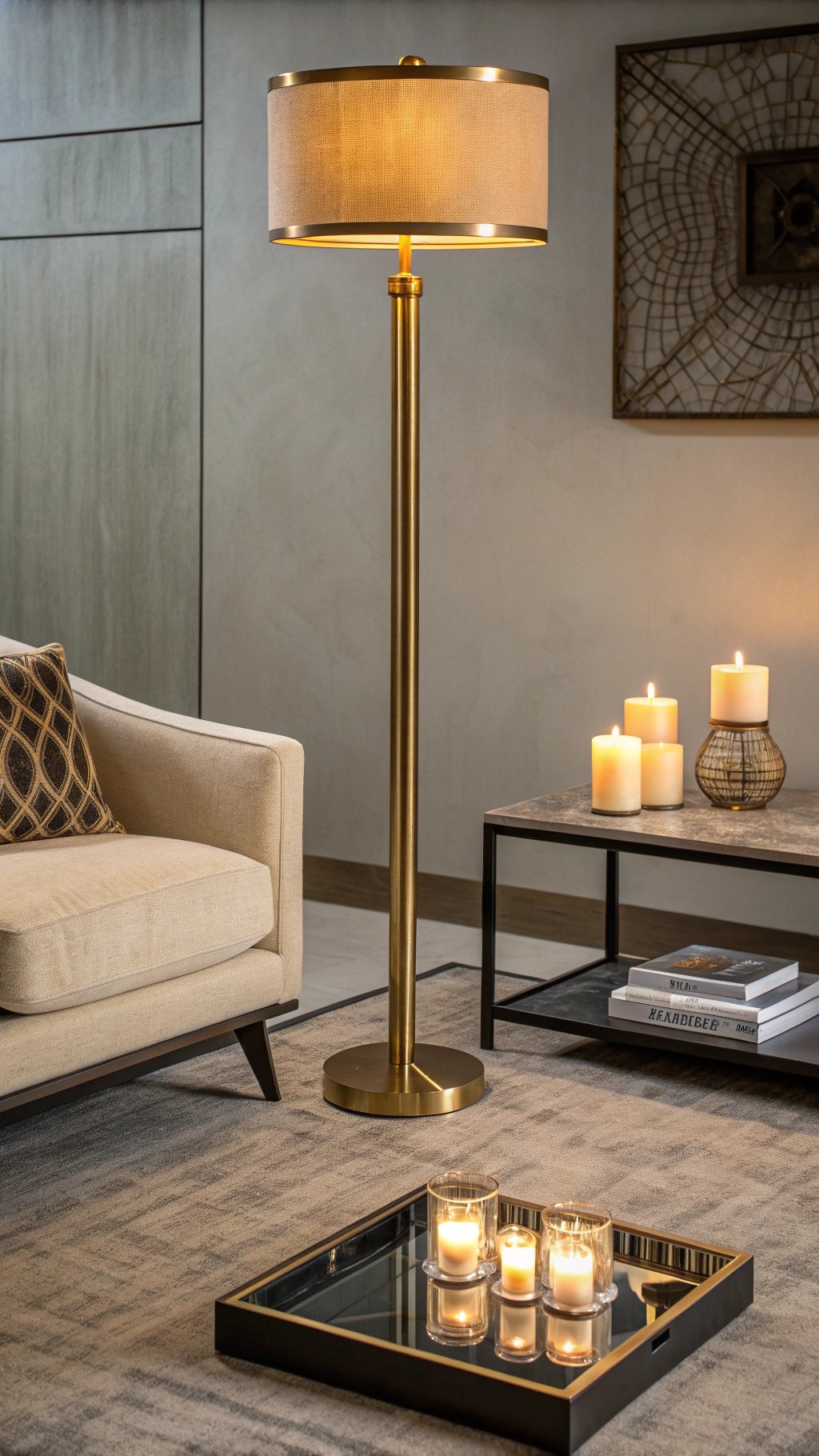
Mix warm metals—brushed brass, satin bronze—with blackened steel accents. Keep finishes low-sheen so they scatter light rather than reflect harshly.
Repeat the same metal two or three times across lamps, frames, and hardware to create a quiet rhythm that reads polished without screaming for attention.
What makes something unique:
Introduce a single small mirrored surface—antiqued or smoked—on a tray or console to bounce candlelight in the evening.
The restrained sparkle feels like jewelry in a tailored outfit. Metal becomes the subtle bridge tying stone, wood, and fabric into one conversation.
7) Gallery-Scale Art and a Single Pedestal
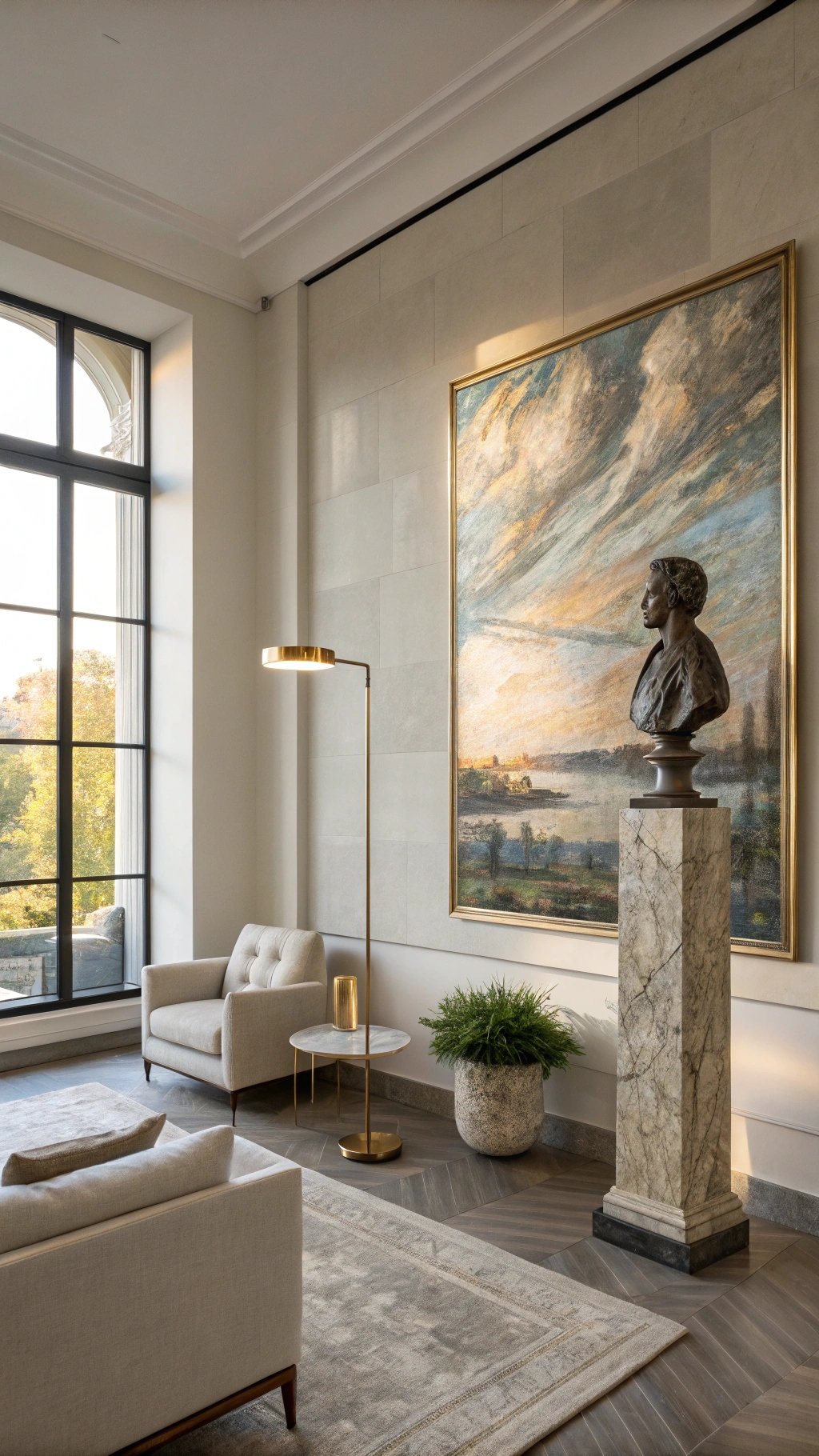
One large piece of art commands attention and reduces clutter. Flank with generous negative space and a slim picture light.
Add one pedestal near, not next to, the sofa for a sculptural object that punctuates the plan. The room feels like a private gallery that just happens to be livable.
What makes something unique:
Color-pick from the artwork into two accents only—perhaps a velvet pillow and a ceramic bowl—so the palette feels intentional.
The restraint lets art lead while furnishings support, a luxury hierarchy that keeps styling effortless over time.
8) Statement Coffee Table as Sculpture
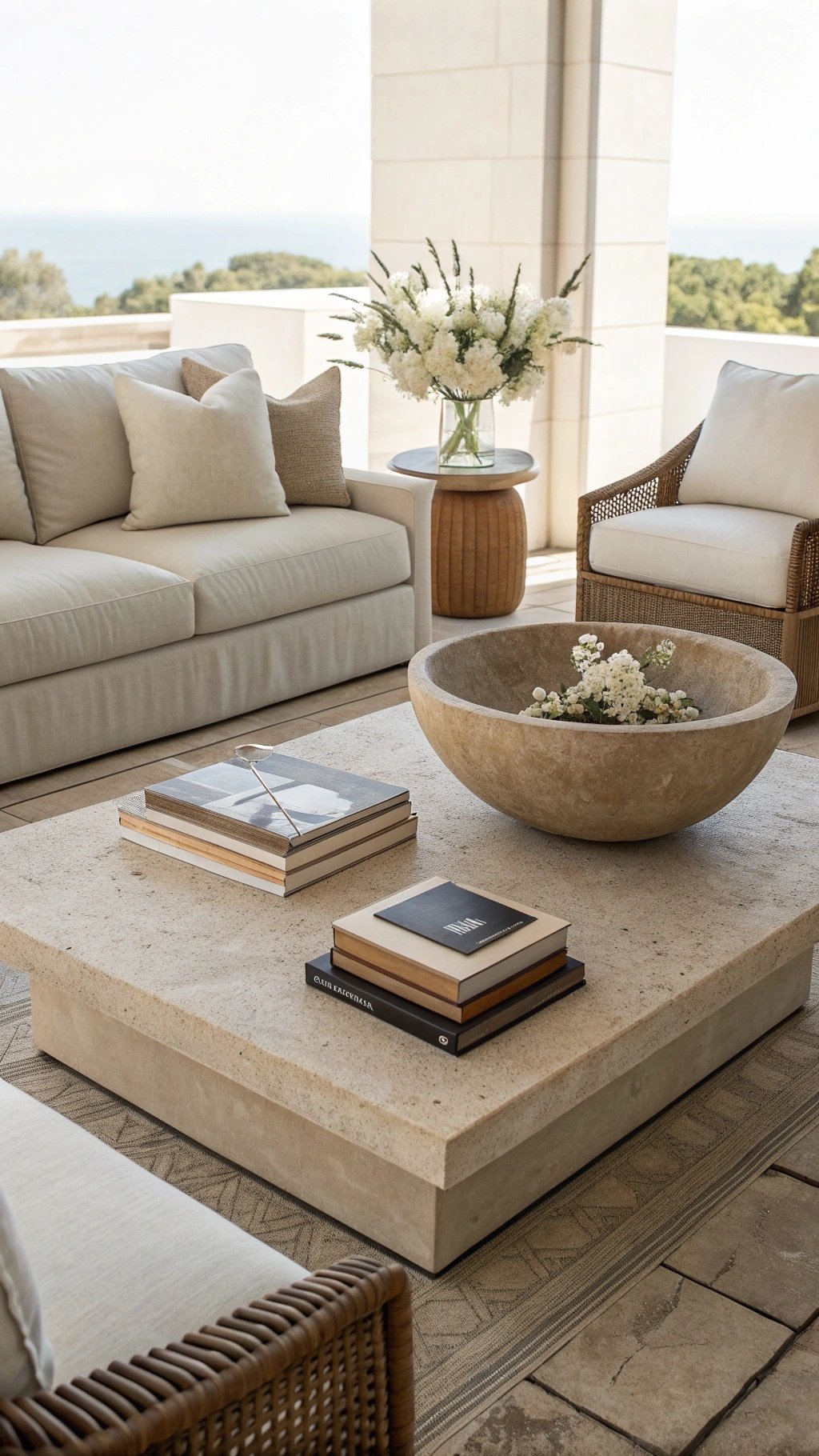
Swap small, busy tables for one substantial centerpiece in stone, cast glass, or solid wood. The mass anchors the seating group and provides a generous surface for a tight edit: books, a stone bowl, and a single floral element. Large scale reads luxurious and simplifies daily styling.
What makes something unique:
Pick a table with organic edges or a monolithic plinth base and keep accessories low in profile to honor the form.
Add a concealed drawer or a lidded box for remotes so nothing breaks the silhouette. The piece becomes both stage and sculpture.
9) Paneling, Plaster, and Quiet Architecture
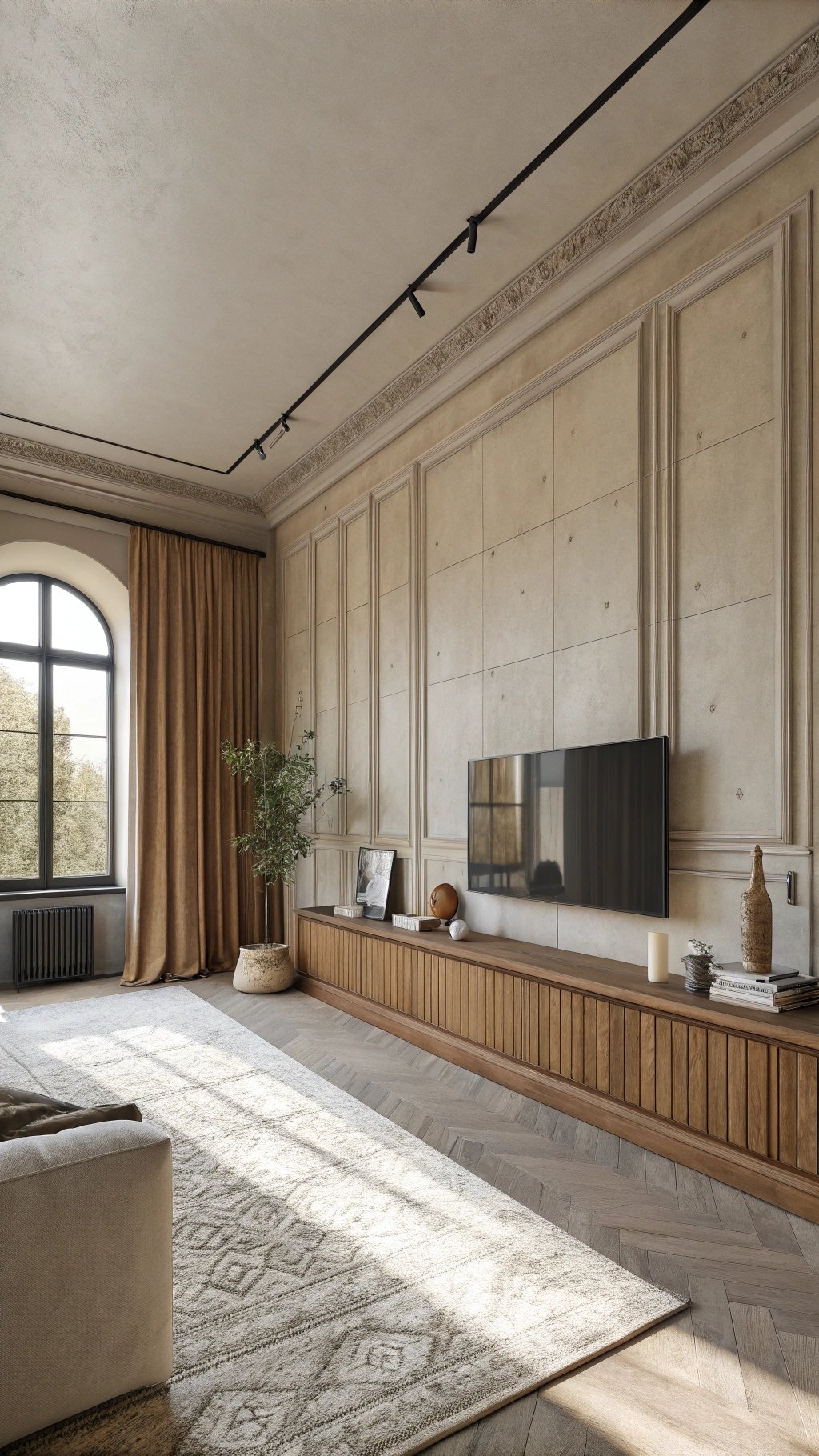
Walls carry as much weight as furniture. Limewash, Venetian plaster, or thin-profile paneling adds depth without pattern.
Color-match outlets and grilles. When the envelope is refined, simple furniture looks bespoke and the entire space feels composed from the ground up.
What makes something unique:
Combine paneling on the lower third with a plaster upper for layered shadow play. Run a continuous ledge at chair-rail height to hold a rotating still life.
Architecture and styling merge, so even minimal arrangements look deliberate and expensive.
10) Window Treatments with Hotel Finish
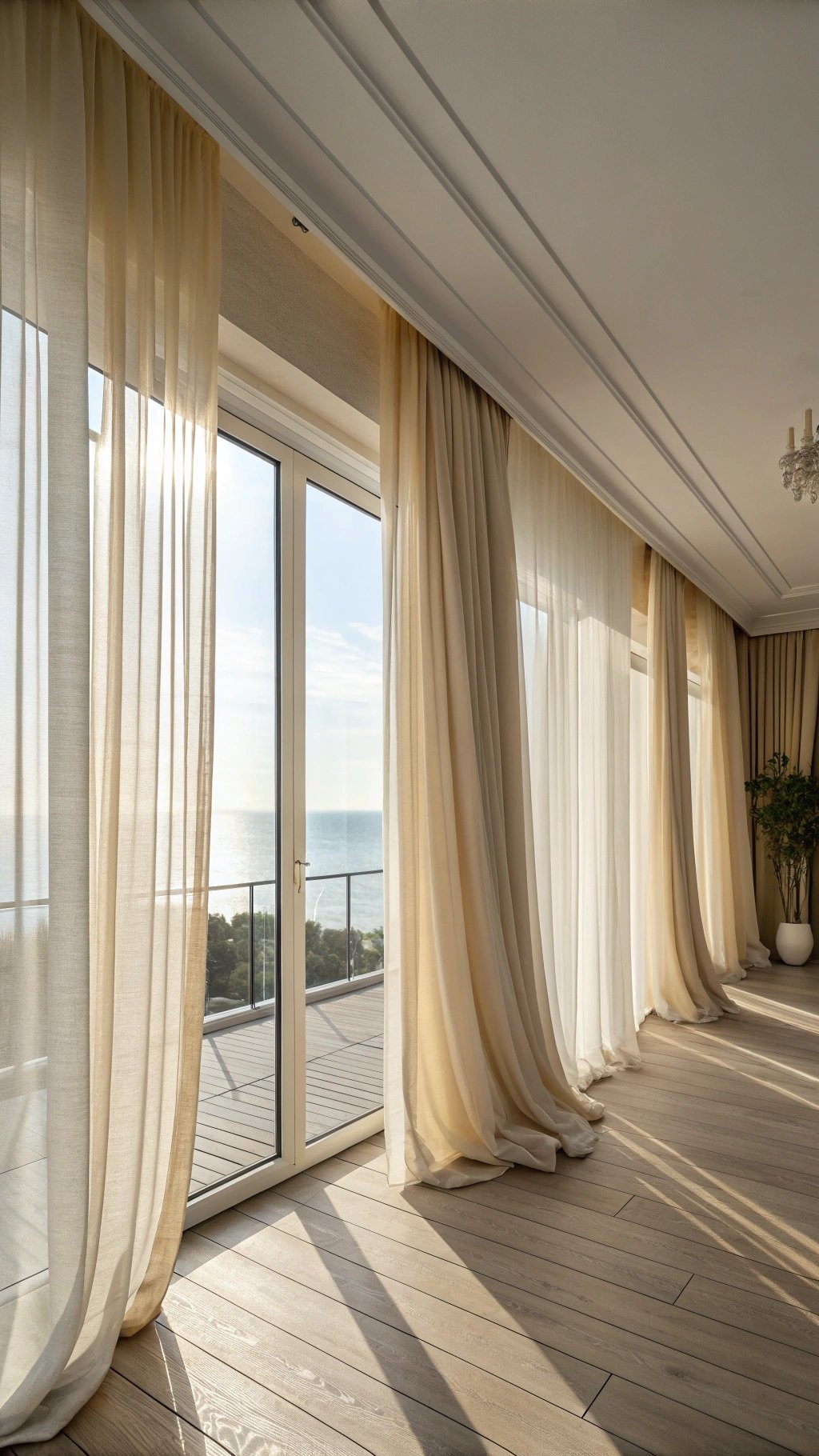
Double up: sheer linens for day, lined drapery for night, both full height and just kissing the floor. Hang from a ceiling track to heighten the room and conceal hardware.
The fabric wall softens acoustics and adds motion with the breeze, a quiet luxury you notice every day.
What makes something unique:
Color the header tape and lining to match so there’s no visual break when drawn. Add a concealed motor for smooth, silent operation.
The tactile choreography—pull, glide, hush—turns light control into a daily ritual that feels indulgent.
11) Small-Space Luxury that Lives Large
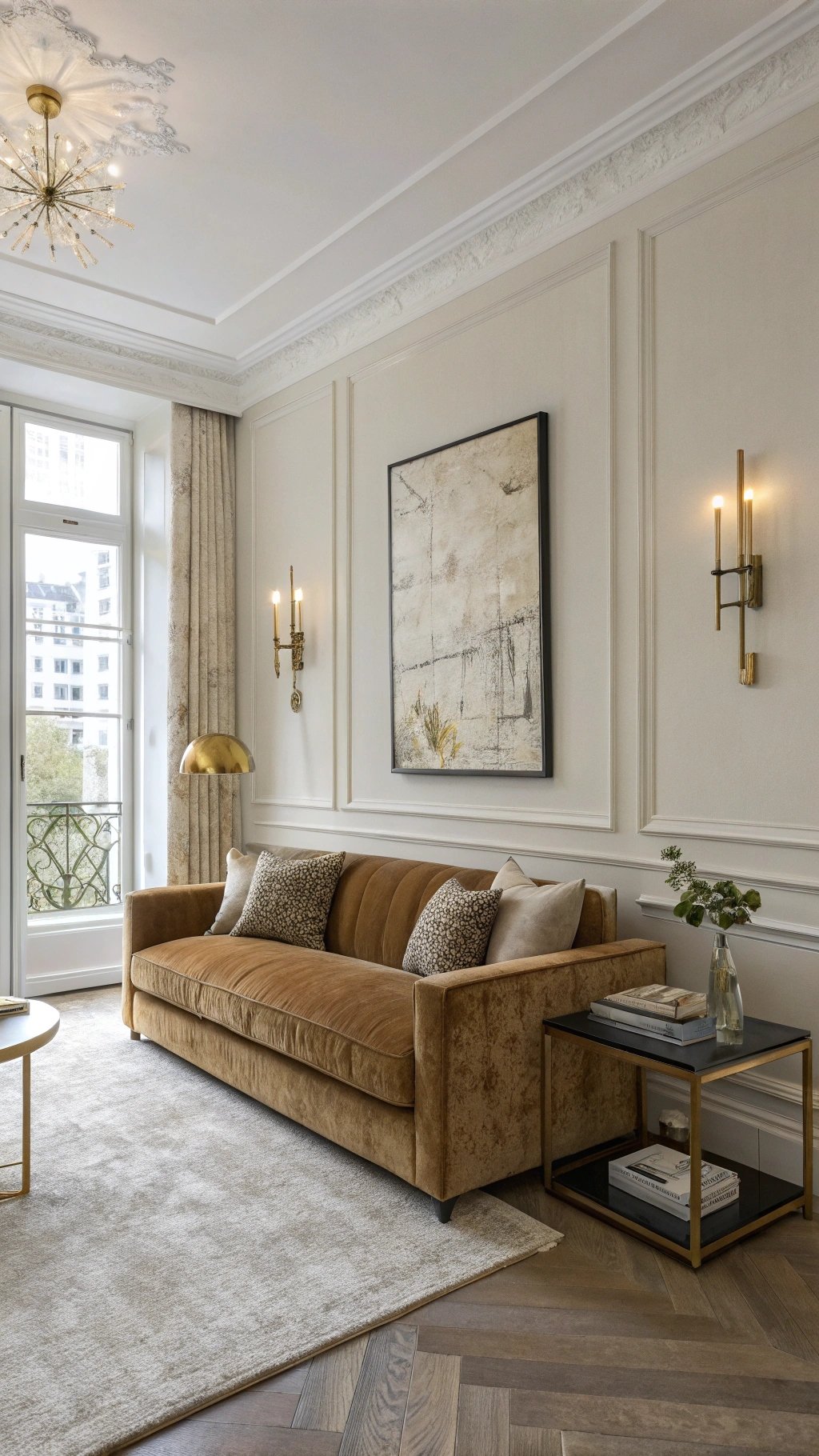
In apartments or cozy lounges, choose a slim-arm sofa in a luxe fabric, wall-mount lighting to free surfaces, and use nesting or waterfall tables in stone.
Mirrors placed opposite windows widen the view, while a single oversized artwork keeps focus and removes the need for multiple small pieces.
What makes something unique:
Finish discipline does the heavy lifting: keep metals consistent, woods related, and fabrics tonal. A custom-sized hand-knotted rug wall-to-wall under furniture creates an “installed” look. The room reads bespoke even when the footprint is modest.
12) Indoor–Outdoor Continuity
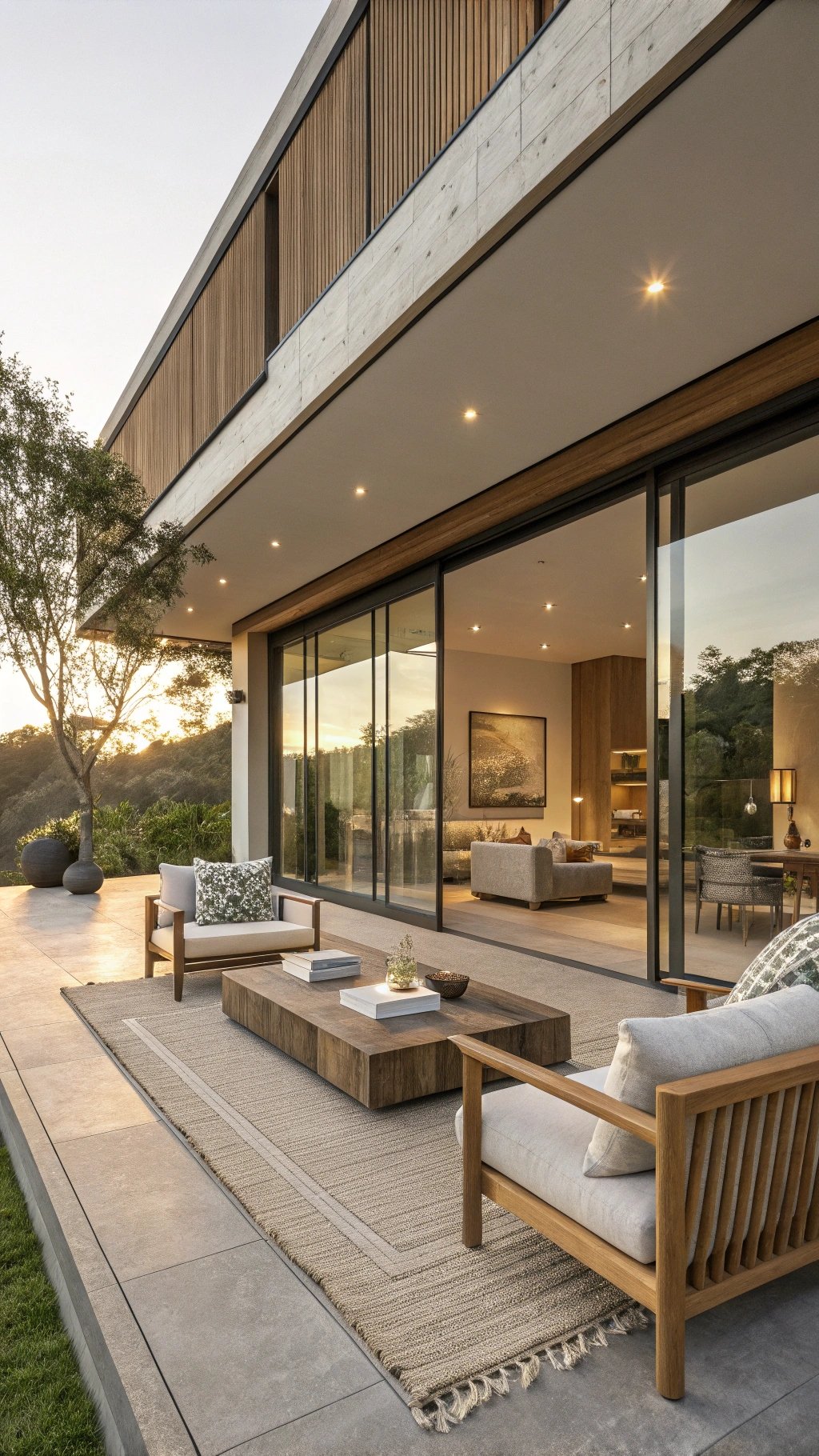
Extend the lounge onto a terrace if you have access. Use similar tones and materials—stone, teak, linen—to blur boundaries through large sliders.
Repeating forms indoors and out creates a resort-like calm and makes entertaining feel effortless.
What makes something unique:
Place the indoor sofa facing the view and mirror the arrangement outside. Use the same lantern finish and cushion palette on both sides of the glass.
The duplicated rhythm reads luxurious and intentional, amplifying daylight and square footage at once.
13) Discreet Tech, Elevated Acoustics
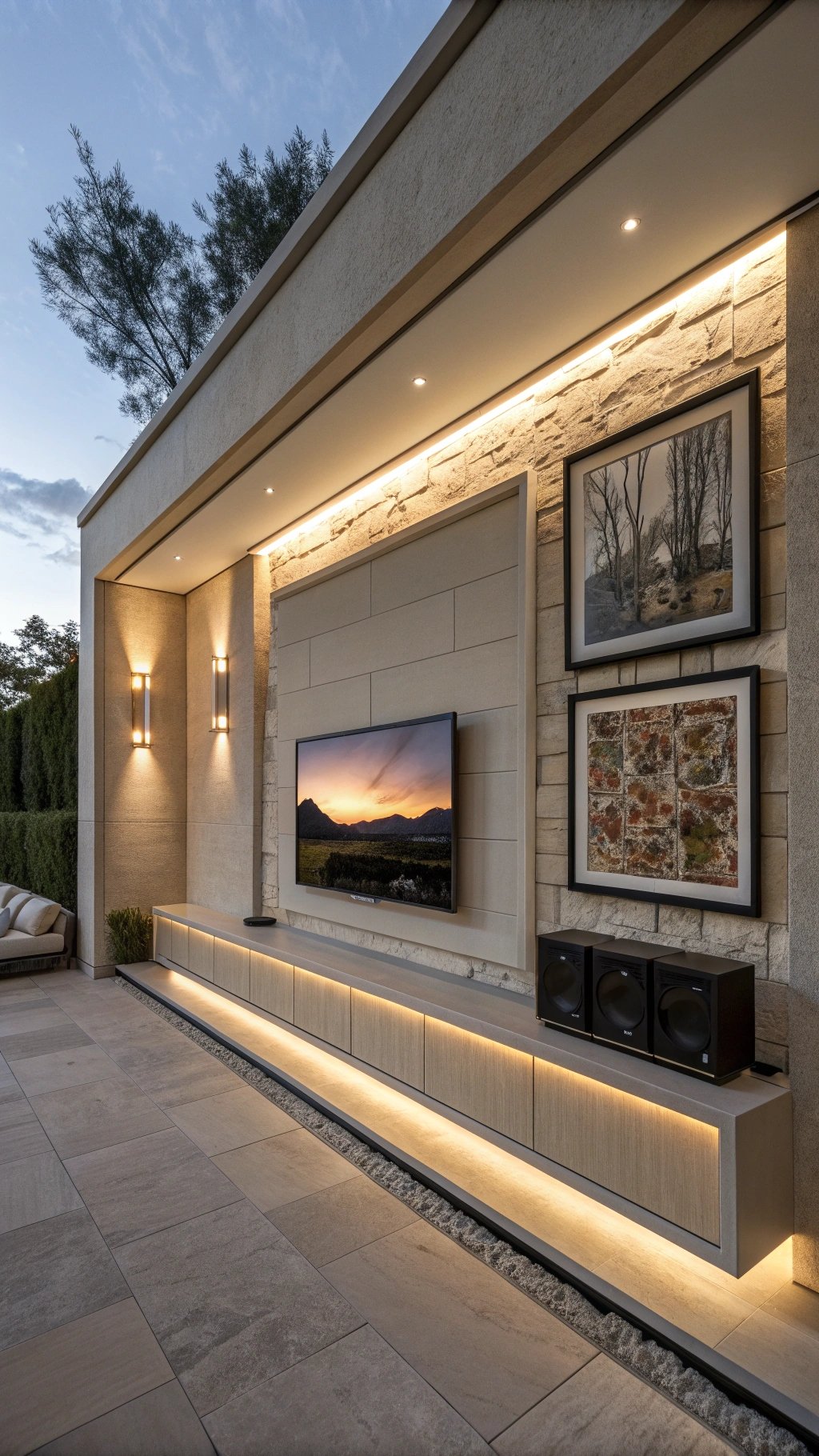
Luxury hides complexity. Conceal wiring in millwork, specify in-wall speakers, and use acoustic panels disguised as art or fabric-wrapped frames.
A short-throw projector or framed TV keeps screens low-profile while preserving a cinema-quality experience.
What makes something unique:
Add a motorized artwork panel that slides to reveal the screen. Edge-light the recess so the reveal feels theatrical. The tech disappears until needed, preserving the room’s calm hierarchy the rest of the time.
14) Sustainable Luxury that Lasts
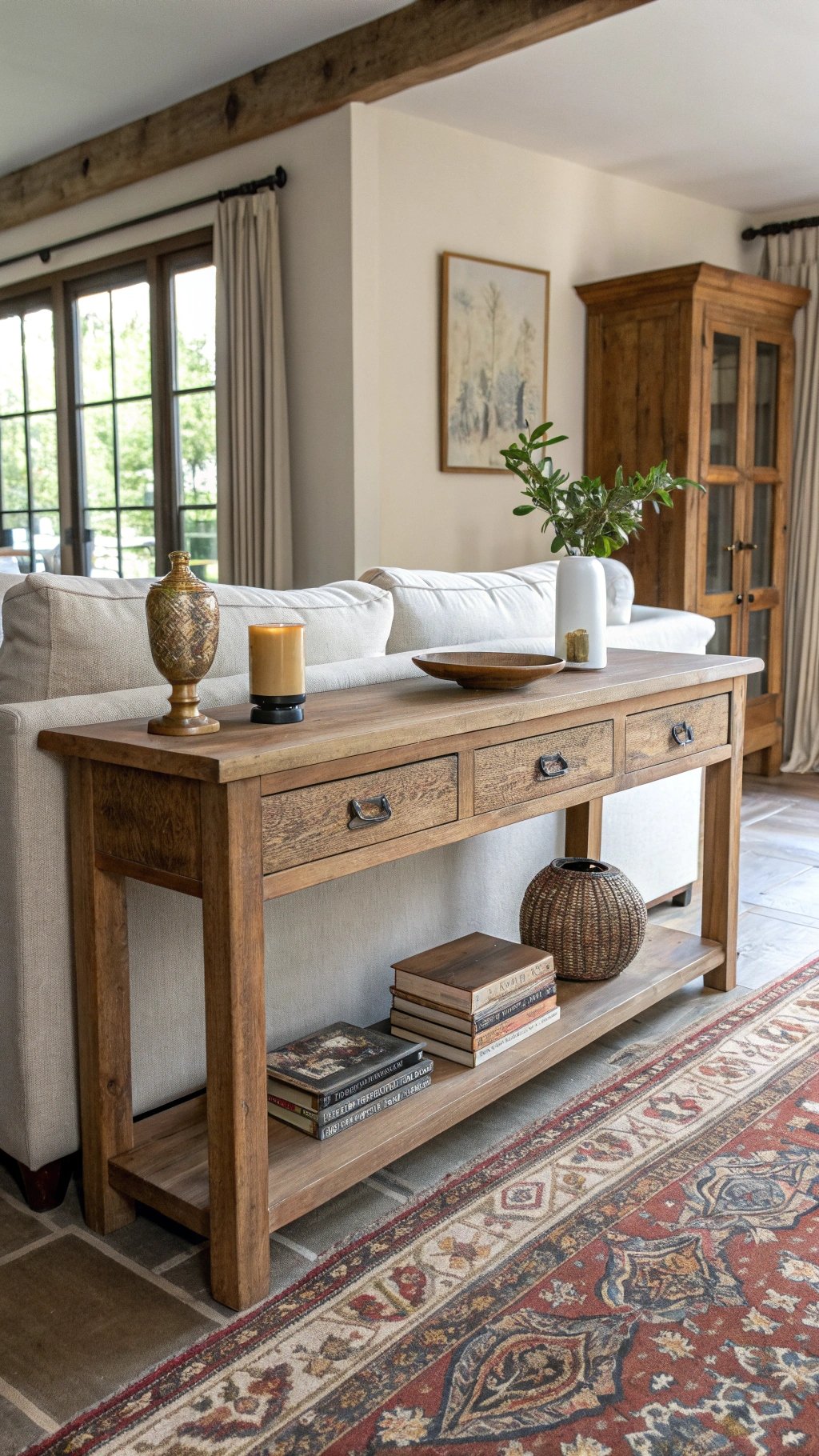
Choose materials that age gracefully: FSC or reclaimed woods, solid brass that patinas, wool and linen over synthetics, and low-VOC finishes.
High-CRI LEDs keep colors honest. Vintage pieces add history and reduce waste, while quality upholstery with replaceable covers supports long-term maintenance.
What makes something unique:
Let sustainability show: a reclaimed oak console with butterfly joints, a vintage Persian rug in muted tones, and solid-brass hardware developing character over time.
The room looks richer each year, proving that longevity is the most luxurious finish of all.
Quick Tips to Nail a Luxury Living Room
Pick one hero move (stone feature, sculptural light, or tailored built-ins) and echo it in two subtle places.
Keep metals consistent and textiles tactile; low-sheen beats high-gloss for everyday elegance.
Edit quarterly so shelves and surfaces stay curated rather than crowded.

